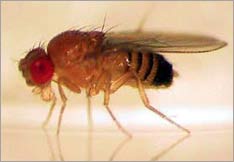Identify molecules sensitive to CO2 in insects
Carbone dioxide (CO 2 ) emitted by plants or humans helps insects identify their location and locate food sources. So the CO2 we emit when breathing allows mosquitoes to find us even in complete darkness. The researchers identified the fruit fly and the CO 2 -sensitive mosquito species.
 CO2-activated neurons have been discovered in insects, but the mechanism that allows these cells to detect CO 2 remains a mystery. The team led by Dr. Leslie Vosshall of Rockefeller University (USA) has identified two molecules that both Gr21a and Gr63a proteins are necessary and sufficient to help fruit flies detect CO 2 .
CO2-activated neurons have been discovered in insects, but the mechanism that allows these cells to detect CO 2 remains a mystery. The team led by Dr. Leslie Vosshall of Rockefeller University (USA) has identified two molecules that both Gr21a and Gr63a proteins are necessary and sufficient to help fruit flies detect CO 2 .
The researchers found two similar proteins in the Anophele mosquito (Anopheles gambiae) that transmit malaria. Dr. Vosshall hopes this finding will help find a new substance capable of inhibiting these molecules to repel insects, allowing prevention of diseases like malaria transmitted from an insect's sting. .
- What will happen if insects disappear from Earth?
- Light-sensitive polymer materials quickly transform from hard to soft
- Insects living in hiding are easy to adapt to the dark
- Why can some insects walk on water?
- Insect-eating insects like to eat
- Ultra-sensitive spectroscope - astronomers' new weapon
- Set of brilliant photos showing off
- New discovery about the motion of water molecules
- Molecular signals from insect antennas
- Curiosity finds organic molecules on Mars
- Assassin insects in nature
- Signifies that you are 'extremely sensitive'
 Why do potatoes have eyes?
Why do potatoes have eyes? 'Tragedy' the world's largest carnivorous life: Death becomes ... public toilet
'Tragedy' the world's largest carnivorous life: Death becomes ... public toilet Tomatoes were once considered 'poisonous' for 200 years
Tomatoes were once considered 'poisonous' for 200 years Detecting microscopic parasites on human face
Detecting microscopic parasites on human face